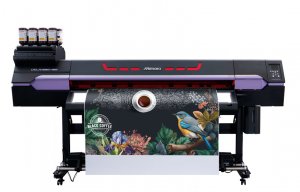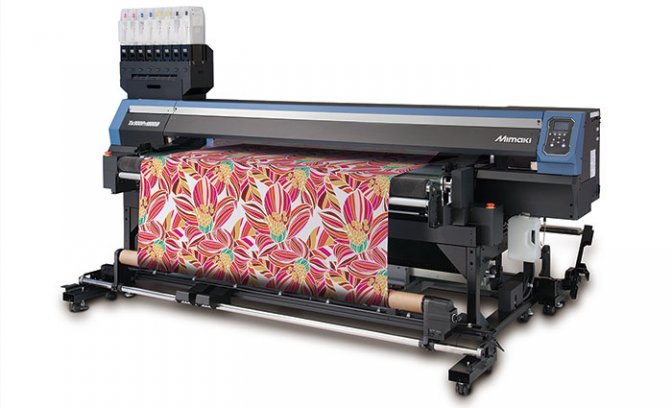
Mimaki celebrates 20 years in Amsterdam
The hybrid ink system for the Tx300P-1800 and Tx300P-1800B direct-to-textile printers will be commercially available in the summer of 2017.

16th March 2017
Innovation in Textiles
|
Amsterdam
Mimaki, a developer of wide-format inkjet printers and cutting machines for the sign/graphics, apparel and industrial markets, has updated its Tx300P-1800 and Tx300P-1800B direct-to-textile printers to simultaneously load both textile pigment and sublimation dye inks.
This enables the use of a single printer to print directly on a wide range of textiles without the need to change out ink systems, the manufacturer explains. This new technology aims to improve productivity and increase flexibility for these Mimaki textile printers.
“Recently, in the textile and apparel markets, quick deliveries and short, customised production are becoming increasingly important. This new system is specifically designed to address this need for cost-effective short run printing of textiles for products or samples,” said Ronald van den Broek, General Manager Sales of Mimaki Europe.
“It means that producers can switch fabric types quickly and easily, selecting the appropriate ink system for each fabric. And these inks do not require usage of water or steaming in the post-treatment process, making them environmentally sustainable as well.”
Mimaki offers five different ink types for textile printing, including sublimation dye ink, dispersion dye ink, textile pigment ink, reactive dye ink and acid dye ink. In the normal course of operation, one ink per printer must be selected. But now textile producers will be able to use the two most popular ink types in one single printer.
The Tx300P-1800 and Tx300P-1800B direct-to-textile printers will be able to simultaneously load TP400 textile pigment ink for cotton and hemp materials as well as Sb420 sublimation dye ink for polyester material. Since neither ink type generally requires steaming or washing in the post-treatment process, there is no need for a large space, a huge quantity of water, or special expertise in handling the printed fabric, the company reports. All that is required is the printer and colour fixing equipment, making these entry-level printers suitable for use by designers, fabric workshops, and educational and research institutions.
“We are very excited about this breakthrough,” commented van den Broek. “We understand the need for an affordable printer with a compact footprint for these users, and we moved swiftly to address this need with a very unique approach. As digital textile printing continues to gain traction, placing these printers in design and educational environments will help educate more people about the possibilities presented by on-demand printing of textiles and spur further demand for digitally printed textiles.”

Business intelligence for the fibre, textiles and apparel industries: technologies, innovations, markets, investments, trade policy, sourcing, strategy...
Find out more